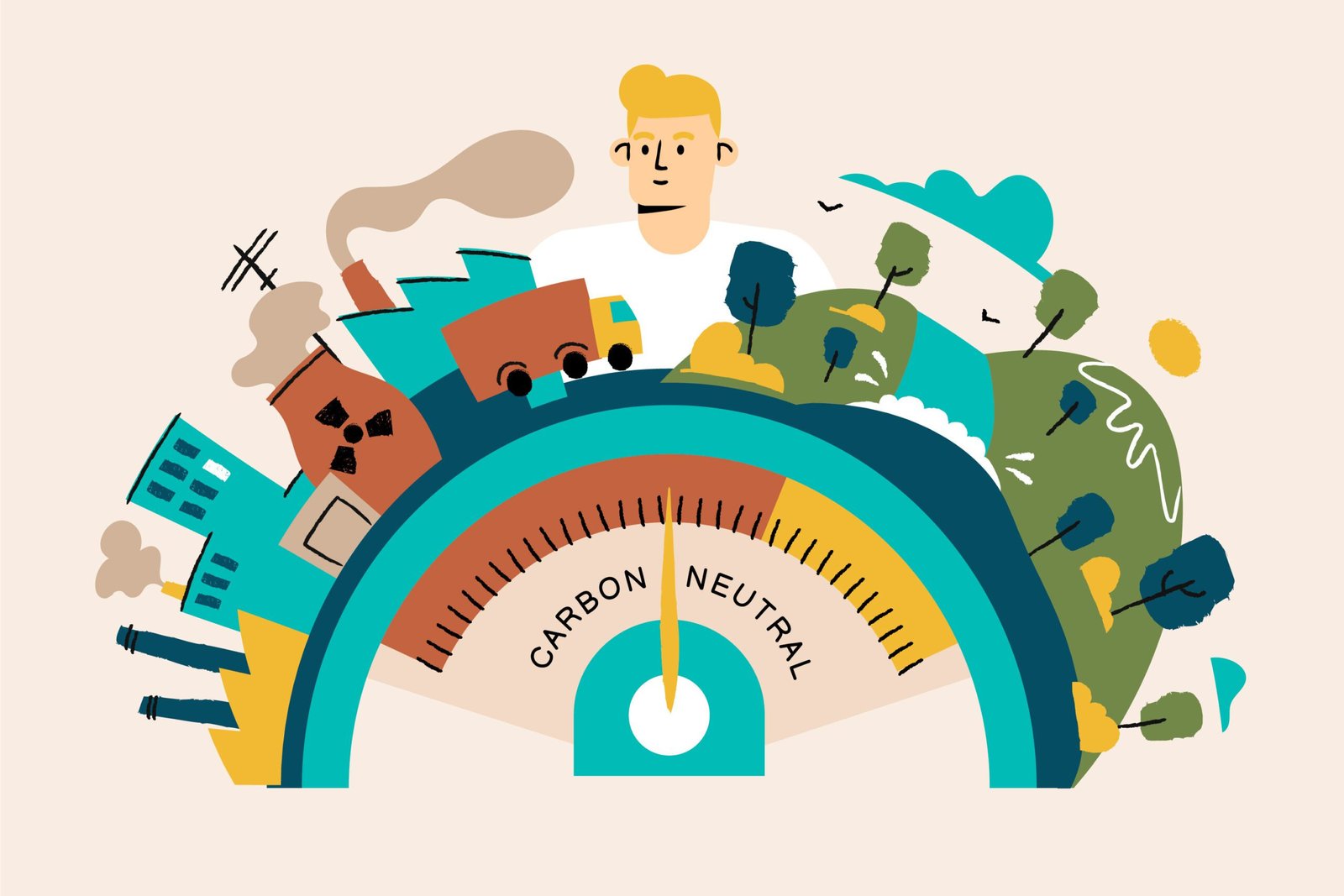

5 Key Red Flags That Can Undermine Your Scope 3.1 Emissions Reporting
Table of Contents
- Why Data Quality in Scope 3.1 Is a Strategic Risk
- 🚩5 Scope 3.1 Red Flags That Signal Poor Data Quality
- 1. Unclear Emissions Boundaries
- 2. Outdated or Unverified Emission Factors
- 3. Inconsistent Units or Missing Conversions
- 4. Proxy Categories Like “Other” or “Miscellaneous”
- 5. Over-Aggregated Product Categories
- How to Build a More Reliable Scope 3.1 Inventory
- Tools and Standards to Strengthen Data Integrity
- Final Thoughts
- FAQs
- How often should emission factors be updated?
- What do I do with “Other” or “Miscellaneous” categories?
- Is there a standard unit I should enforce?
As companies advance on their net-zero journey, Scope 3.1(purchased goods and services) often becomes the largest and most complex category of emissions. This category depends heavily on procurement and supplier data, which is notoriously fragmented, inconsistent, or incomplete.
And while availability is a challenge, data quality is the true make-or-break factor in producing accurate emissions estimates. Poor-quality data doesn’t just inflate your carbon numbers, it can lead to misleading disclosures, lost credibility, and compliance risks under frameworks like CSRD, SEC climate rule, or CDP scoring.
This blog highlights five red flags you should watch for when evaluating the quality of Scope 3.1 emissions data, and how to address them effectively.
Why Data Quality in Scope 3.1 Is a Strategic Risk
Scope 3.1 is typically the largest category of emissions for companies in manufacturing, automotive, consumer goods, and electronics sectors, often accounting for 40–80% of the entire value chain footprint.
Because this category relies on supplier-level inputs and procurement records, even small inconsistencies can lead to major distortions in total emissions.
What’s at stake?
- Audit failures in assurance exercises”, but the most accurate and appropriate one available for your procurement context.
- Misreporting under regulatory frameworks
- Skewed internal carbon pricing and procurement decisions
- Lower CDP scores and investor skepticism
That’s why it’s critical not just to gather data, but to validate it rigorously.

🚩5 Scope 3.1 Red Flags That Signal Poor Data Quality
1. Unclear Emissions Boundaries
What it looks like:
A supplier reports “Scope 3 emissions from purchased aluminium” but doesn’t specify if this includes raw material extraction, transport, or only on-site energy use.
Why it matters:
Emissions boundaries define what’s included in the emissions calculation (e.g., cradle-to-gate vs. gate-to-gate). If you don’t know the boundary, you risk either double-counting or omitting major emissions sources.
What to do:
Always require suppliers to declare their emissions boundary. Use boundary-aligned emission factors and reconcile with your own lifecycle assumptions.
2. Outdated or Unverified Emission Factors
What it looks like:
Your emissions estimates use DEFRA 2014 emission factors or ecoinvent datasets from a decade ago.
Why it matters:
Outdated factors may no longer reflect current energy mixes, process efficiencies, or supply chain decarbonisation. This creates a false baseline that under- or overstates emissions.
What to do:
Use factors that are:
- No older than 5–7 years
- From vetted sources like ecoinvent, DEFRA (UK), ADEME (France), USEEIO (US-based), EXIOBASE (global)
- Transparent about methodology and assumptions
Pro tip: Keep a central registry of all emission factors used, with timestamps.
3. Inconsistent Units or Missing Conversions
What it looks like:
A supplier reports “tons of steel” for one line item, “kg” for another, and “units” for a third — all referring to the same material, in the same dataset.
Why it matters:
This kind of inconsistency suggests lack of internal data governance or manual entry errors. It can lead to invalid emissions calculations, double counting, or underreporting due to missed conversions.
What to do:
Enforce unit standardization during data collection. Build validation rules that flag inconsistent units within a single submission. Use automated tools to normalize and convert units where possible, but always review flagged discrepancies with the supplier directly.
Pro Tip: Include unit definitions in your supplier templates and provide dropdowns where possible. This minimizes variation and avoids confusion over terms like “liters” vs. “litres” or “tons” (metric vs. short).
4. Proxy Categories Like “Other” or “Miscellaneous”
What it looks like:
A significant chunk of procurement spend is logged under categories like “General Supplies,” “Other Components,” or “Miscellaneous Purchases.”
Why it matters:
These generic categories are not mappable to specific emission factors, leading to generic or highly averaged emissions estimates.
What to do:
- Work with procurement to refine product codes or descriptions
- Reclassify using HS codes, UNSPSC, or internal taxonomy standards
- Use AI-based classification tools (e.g., Mavarick) to improve granularity
5. Over-Aggregated Product Categories
What it looks like:
Your ERP lists everything from stainless steel screws to industrial turbines under “Metal Products.”
Why it matters:
Emissions factors vary significantly across product types. Using a broad category can lead to false averages that mask high-impact items.
For instance, steel sheet production can have 2–4x the emissions intensity of cast iron parts, especially when origin country is factored in.
What to do:
Where possible, apply product-specific emission factors or split broad categories into logical subcategories before estimation.
How to Build a More Reliable Scope 3.1 Inventory
- Perform data quality checks using automated rules (e.g., flagging emission factors older than 5 years)
- Use materiality thresholds to decide which suppliers or purchases deserve higher scrutiny
- Implement unit harmonisation protocols across procurement and sustainability teams
- Create a data intake template for suppliers that enforces boundary clarity and conversion logic
- Maintain a data dictionary with agreed definitions for all categories and fields
Tools and Standards to Strengthen Data Integrity
To ensure strong data governance in Scope 3.1:
- Follow the GHG Protocol’s Scope 3 Standard (particularly its guidance on supplier screening and data hierarchies)
- Use tools like Mavarick to normalise, audit, and enrich supplier data
- Align procurement taxonomies using standards like:
- UNSPSC (United Nations Standard Products and Services Code)
- HS Codes (Harmonised Commodity Description)
- GS1 Global Product Classification
Want to simplify Scope 3.1 supplier reporting?
Final Thoughts
Scope 3.1 reporting is only as strong as the data it’s built on. Red flags like outdated factors, vague boundaries, or inconsistent units might seem small, but they erode the integrity of your inventory at scale.
The good news? Most red flags are solvable with:
- Better procurement alignment
- Smarter data tools
- Clear documentation of assumptions
By proactively identifying and correcting these issues, you’ll not only improve emissions accuracy, you’ll enhance the transparency, credibility, and audit-readiness of your climate disclosures.
FAQs
How often should emission factors be updated?
Ideally every 2–3 years, and never older than 5–7 years for compliance or assurance readiness.
What do I do with “Other” or “Miscellaneous” categories?
Reclassify based on spend patterns, product descriptions, or supplier input. Avoid using them in final reporting.
Is there a standard unit I should enforce?
Use kg or metric tons for material quantity, and standard currency (e.g., USD or EUR) for spend-based calculations
Carbon Accounting System
Carbon Emissions Reporting for the Supply Chain
- Visible Supply Chain
- Quality Data You can Trust
- Auditable Reports
